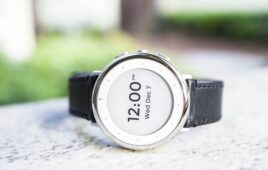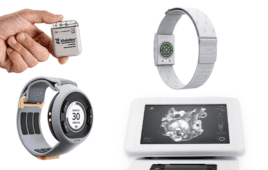The U.S. Food and Drug Administration has approved a new obesity treatment device that uses a surgically placed tube to drain a portion of the stomach contents after every meal.
The AspireAssist device is intended to assist in weight loss in patients aged 22 and older who are obese, with a body mass index of 35 to 55, and who have failed to achieve and maintain weight loss through non-surgical weight-loss therapy. It should not be used on patients with eating disorders, and it is not intended to be used for short durations in those who are moderately overweight, according to the FDA.
“The AspireAssist approach helps provide effective control of calorie absorption, which is a key principle of weight management therapy,” William Maisel, MD, MPH, deputy director for science and chief scientist at the FDA’s Center for Devices and Radiological Health, said in a press statement. “Patients need to be regularly monitored by their health care provider and should follow a lifestyle program to help them develop healthier eating habits and reduce their calorie intake.”
To place the device, surgeons insert a tube in the stomach with an endoscope via a small incision in the abdomen. A disk-shaped port valve that lies outside the body, flush against the skin of the abdomen, is connected to the tube and remains in place.
Approximately 20 to 30 minutes after meal consumption, the patient attaches the device’s external connector and tubing to the port valve, opens the valve and drains the contents. Once opened, it takes approximately five to 10 minutes to drain food matter through the tube and into the toilet. The device removes approximately 30 percent of the calories consumed.
The FDA reviewed results from a clinical trial of 111 patients treated with AspireAssist and appropriate lifestyle therapy, and 60 control patients who received only the lifestyle therapy. After one year, patients using AspireAssist lost an average of 12.1 percent of their total body weight compared to 3.6 percent for the control patients.
Clinical trial results also suggested that both patient groups had small improvements in conditions often associated with obesity, such as diabetes, hypertension and quality of life. The improvements may be attributable to the lifestyle therapy, which includes nutrition and exercise counseling.
Patients require frequent monitoring by a health care provider to shorten the tube as they lose weight and abdominal girth, so that the disk remains flush against their skin, according to the agency release. Frequent medical visits are also necessary to monitor device use and weight loss and to provide counseling on lifestyle therapies.
The device also has a safety feature that keeps track of the number of times the drain tube is connected to the port and automatically stops working after 115 cycles (approximately five to six weeks of therapy). Patients must then return for a medical visit to get a replacement part for the device in order to continue the therapy. The safety feature helps ensure patients use the device properly during therapy.
Side effects related to use of the AspireAssist include occasional indigestion, nausea, vomiting, constipation and diarrhea.
The endoscopic surgical placement of the gastric tube is associated with risks, including sore throat, pain, abdominal bloating, indigestion, bleeding, infection, nausea, vomiting, sedation-related breathing problems, inflammation of the lining of the abdomen, sores on the inside of the stomach, pneumonia, unintended puncture of the stomach or intestinal wall and death.
Risks related to the abdominal opening for the port valve include abdominal discomfort or pain, irritation, hardening or inflammation of the skin around the site where the tube is placed, leakage, bleeding and/or infection around the site where the tube is placed and device migration into the stomach wall. All have the potential to necessitate removal of the device. After device removal, there may be a risk of persistent fistula, an abnormal passageway between the stomach and the abdominal wall.
AspireAssist is contraindicated in those with certain conditions, including uncontrolled hypertension, diagnosed bulimia, diagnosed binge eating disorder, night eating syndrome, certain types of previous abdominal surgery, pregnancy or lactation, inflammatory bowel disease or stomach ulcers. AspireAssist is also contraindicated in patients with a history of serious pulmonary or cardiovascular disease, coagulation disorders, chronic abdominal pain or those at a high risk of medical complications from an endoscopic procedure, acccording to the FDA release.
The AspireAssist System is manufactured by Aspire Bariatrics located in King of Prussia, PA.




